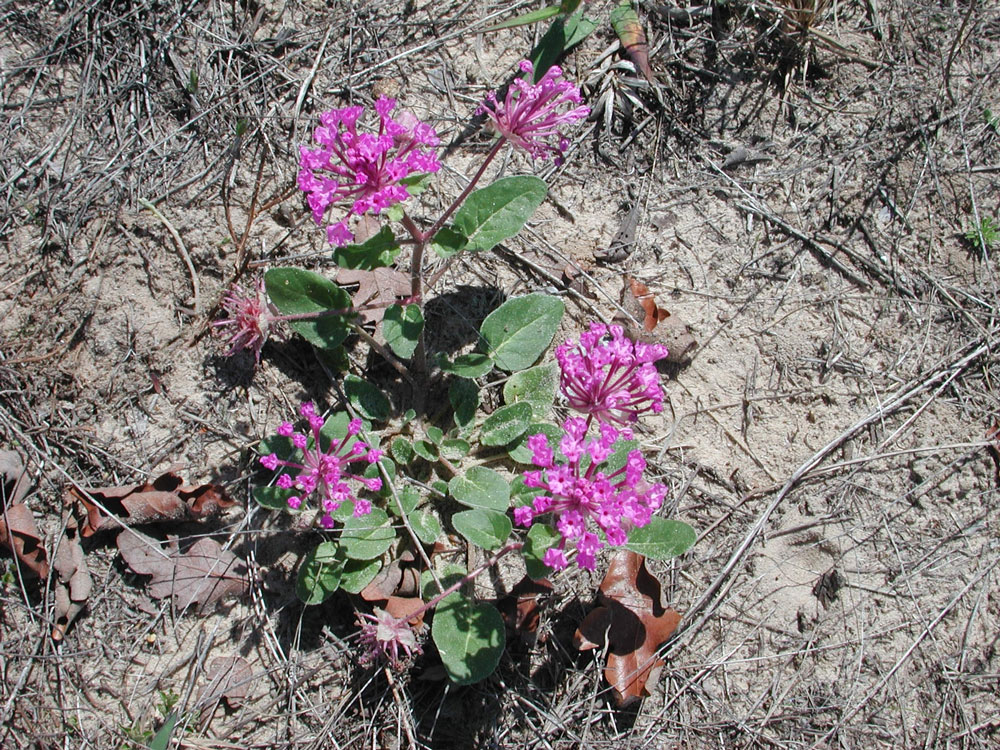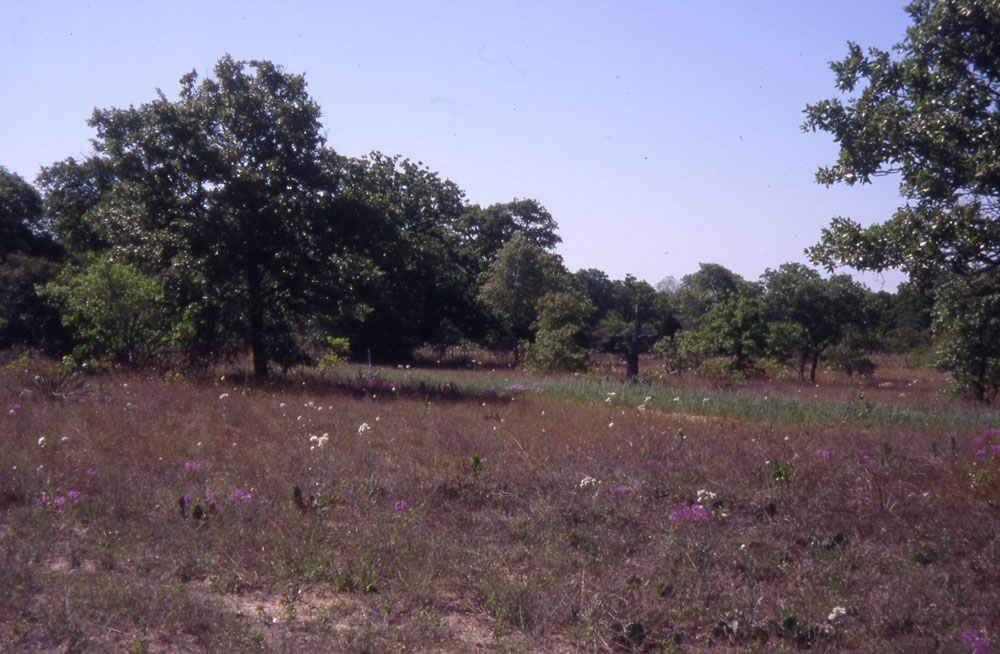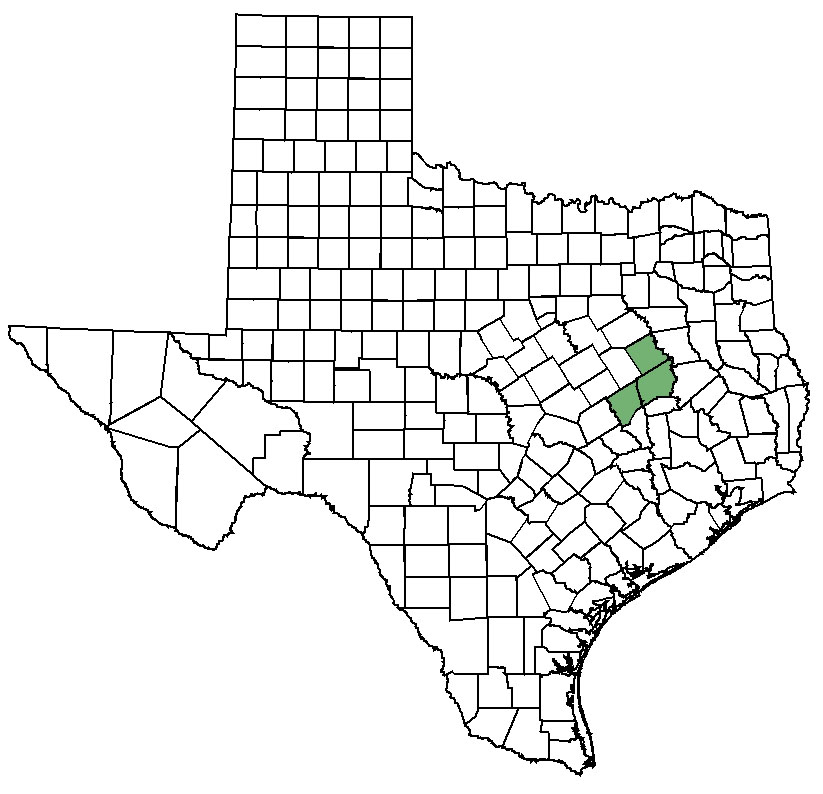Federal and State Listed Species of Texas:
large-fruited sand verbena
Global Location
Known only from Freestone, Leon, and Robertson counties in Texas.
null
Credit:
Description
Large-fruited sand verbena is a non-woody perennial with a taproot. The 50 cm tall stems have sticky hairs and are more or less erect. Leaves occur opposite to one another along the stem, are egg-shaped, and 2-5 cm long. All leaves have sticky hairs and are thick textured. Leaf edges are smooth or wavy, but not lobed. The pink-purple, funnel-shaped flowers are 6-13 cm long and 4-6 mm wide. The flared portion of the funnel has five lobes. Twenty to seventy-five flowers cluster together in a 4-7 cm wide head. The 8-15 mm long fruit has a lengthwise heart-shaped outline and five papery wings.

The leaves of large-fruited sand verbena have sticky hairs (which collect sand, as you can see in the image), have smooth or wavy edges, and are not lobed. The flowers are always pink-purple.
Credit: Paula Williamson - Texas State University
null
Credit:
null
Credit:
Similar Species
Rose vervain (Glandularia canadensis), a common plant throughout East Texas, has thinner leaves than large-fruited sand verbena. Also, the leaves are sharply and irregularly cut and have three (or more) shallow lobes. The flowers are mostly pink, but display a great variety of colors, from rose to magenta, and blue to purple. Although rose vervain flowers are funnel-shaped, the flowers are wider (11-15 mm), and at the end of each lobe there is one shallow notch. When mature, the four-chambered fruit break into four 1-seeded, oblong sections, which are slightly flared at the base. Unlike large-fruited sand verbena, these fruits do not have wings.
The leaves of rose vervain are relatively thin, sharply and irregularly cut, and have three or more shallow lobes. Similar to the flowers in the image, the blooms of rose vervain are mostly pink, but they can be other colors.
Credit: Paula Williamson - Texas State University
null
Credit:
null
Credit:
null
Credit:
null
Credit:
null
Credit:
Floral Characters
nullLeaf Characters
nullnull
Credit:
null
Credit:
null
Credit:
Habitat
Large-fruited sand verbena occurs in deep sandy soils with sparse vegetation in openings of post oak woodlands.

Habitat of large-fruited sand verbena.
Credit: Gena Janssen - Texas Parks & Wildlife Dept.
Life Cycle Events
Flowering occurs from February to May and occasionally after high rainfall. The plants usually die back during the hot summer months, and rosettes emerge in the fall.
Survey Season
As an herbaceous perennial, large-fruited sand verbena dies back after the fruits disperse in the summer and re-emerges in the fall; however, the plant is most easily detected when in flower February to April.
null
Additional Information
- Rare Plants of Texas
- U.S. Fish and Wildlife Service
- NatureServe
- Center for Plant Conservation
- Flora of North America
- Williamson, P.W. 1996. Large-fruited sand-verbena monitoring and management study. September 1992-August 1996. Section 6 final report. Austin: Texas Parks & Wildlife Department.
- Williamson, P.W. 2002. Large-fruited sand verbena landowner technical assistance. Section 6 final report. Austin: Texas Parks & Wildlife Department.
- Williamson, P.W. 2008. Protection on private lands and research for recovery of large-fruited sand verbena. Section 6 final report. Austin: Texas Parks & Wildlife Department.

Comments